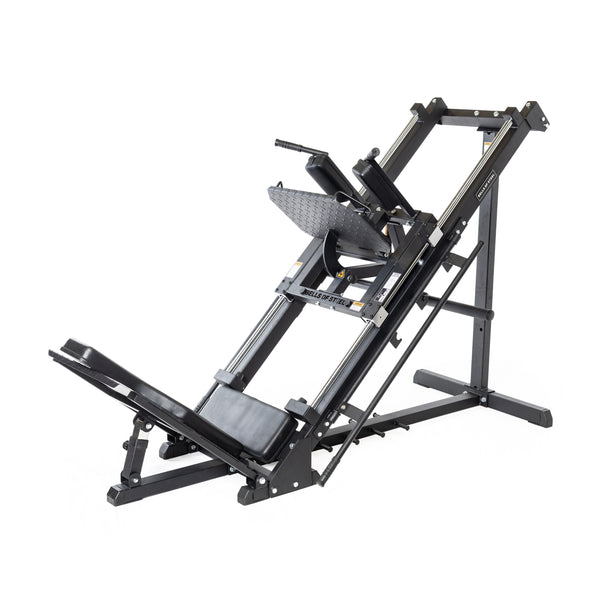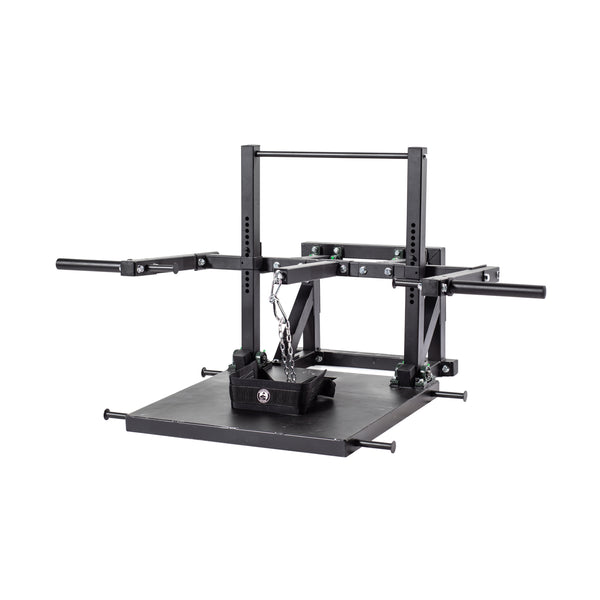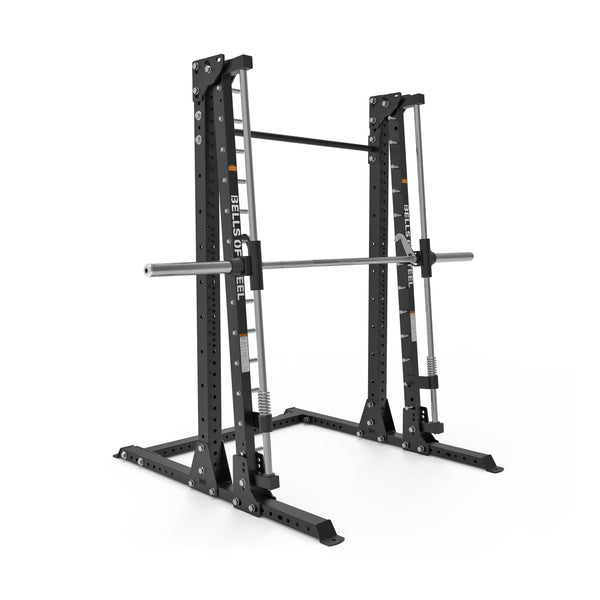Squats are a fundamental movement in strength training, known for building strong legs, glutes, and core. But not everyone wants—or needs—to squat with a barbell. Whether you're training alone, managing joint pain, or simply want more variety in your lower-body training, squat machines can deliver big results.
Choosing the best squat machine isn’t a one-size-fits-all decision. It depends on your goals, space, injury history, and how you like to train. This guide breaks down the benefits of using a squat machine and compares the most popular types to help you choose the right one for your home gym.
Why Use a Squat Machine?
Squat machines remove the guesswork from form and allow you to train with intensity and safety, especially when lifting alone. They guide your movement through a fixed path, often with back or hip support, reducing the risk of injury and improving confidence.
Benefits of Using a Squat Machine
-
Enhanced safety for solo lifters
-
Reduced stress on joints and spine
-
Improved quad, glute, and hamstring isolation
-
Easier to train to failure or use high reps
-
Beginner-friendly alternative to barbell squats
Factors to Consider When Choosing a Squat Machine
When evaluating squat machines, consider the following:
-
Training Goals: Strength, size, rehab, or endurance?
-
Available Space: Some machines are compact; others require serious floor space.
-
Budget: Costs vary widely depending on build and function.
-
Injury History: Back or shoulder issues may rule out certain machines.
-
Weight Capacity: Ensure the machine can grow with your strength.
Types of Squat Machines (Pros, Cons & Who They’re For)
Smith Machine
 The Smith machine features a barbell fixed to a vertical track, allowing you to squat safely without a spotter.
The Smith machine features a barbell fixed to a vertical track, allowing you to squat safely without a spotter.
Pros
-
Great for beginners and solo lifters
-
Doubles as a multi-exercise station
-
Safer for pushing heavy loads alone
Cons
-
Fixed path may feel unnatural
-
Less activation of stabilizing muscles
Best For: New lifters, solo home gym users, those seeking versatility
Not Ideal For: Advanced lifters wanting free-weight carryover
Belt Squat Machine
 The belt squat machine loads your lower body via a belt around the hips, sparing the spine from compression.
The belt squat machine loads your lower body via a belt around the hips, sparing the spine from compression.
Pros
-
No upper-body loading
-
Perfect for training around injuries
-
Great for high-volume leg work
Cons
-
Requires a platform or machine attachment
-
Less common in basic home setups
Best For: Lifters with back or shoulder issues, hypertrophy training
Not Ideal For: Ultra-compact gyms without a rack or platform
Hack Squat Machine
The hack squat uses a sled system on a fixed angle to provide targeted lower-body resistance.
Pros
-
Excellent for quad development
-
Stable and supportive
-
Ideal for hypertrophy
Cons
-
Takes up considerable space
-
Not as versatile as other options
Best For: Bodybuilders, hypertrophy-focused training
Not Ideal For: Minimalist home gyms, lifters with limited knee mobility
Pendulum Squat Machine (Coming Soon)
This machine provides a swinging motion that closely mimics the natural squat pattern with deep range and excellent muscle tension.
Pros
-
Smooth and joint-friendly
-
Superior range of motion
-
Great glute and quad activation
Cons
-
Large footprint
-
Premium price point
Best For: Intermediate to advanced lifters wanting serious leg growth
Not Ideal For: Budget-conscious or space-restricted home gyms
Sissy Squat Machine
The sissy squat is a compact machine designed to isolate the quads through a deep, knee-dominant squat.
Pros
-
Extremely space-efficient
-
Intense quad burn with bodyweight
-
Low cost
Cons
-
Limited to quad-dominant work
-
Not suitable for those with knee pain
Best For: Quad-focused isolation, tight home gym spaces
Not Ideal For: Those looking for full lower-body development
Frequently Asked Questions
What is the best squat machine for beginners?
The Smith machine is beginner-friendly thanks to its guided movement and safety features. The belt squat is also great for those who want to avoid spinal loading.
Which squat machine is best for building quads?
The hack squat and pendulum squat machines offer intense quad engagement through a deep range of motion. The sissy squat is a strong compact alternative.
Are squat machines good for bad knees?
Machines like the belt squat and pendulum squat tend to be more joint-friendly due to better weight distribution. Avoid deep sissy squats if you have sensitive knees. Always talk to a medical professional before using squat machines and listen to your body.
Can I replace barbell squats with a machine?
Yes. While barbell squats offer the benefit of free-weight coordination, squat machines provide a safe, effective alternative that can match or exceed hypertrophy benefits.
Which squat machine saves the most space?
The sissy squat machine is by far the most compact. Belt squat attachments and Smith machines with multiple uses also offer good space efficiency.
Final Thoughts
There’s no single “best” squat machine: it depends on your goals, limitations, and space. The Smith machine works for almost everyone, while the belt squat is unmatched in joint-friendly lower-body training. Hack and pendulum squats provide next-level hypertrophy potential, and the sissy squat machine is a space-saving quad killer.
Pick the machine that fits your needs—not just your wants—and your legs will thank you later.





